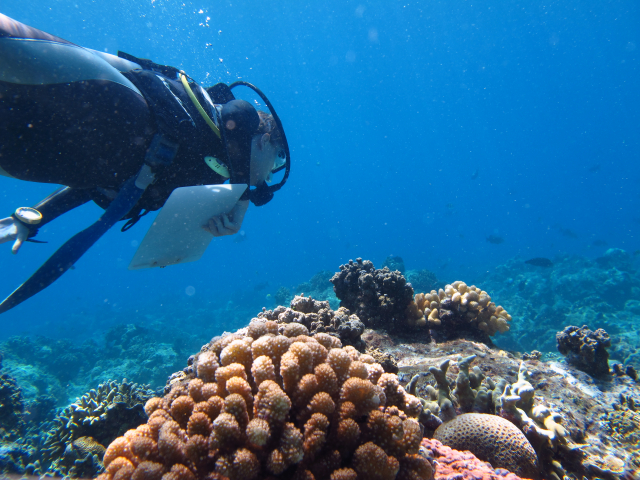The ZMT has developed a number of exhibits for exhibitions and presentations that bring tropical ecosystems such as coral reefs or mangroves and aspects of ZMT research to life, including several virtual reality applications. The ZMT also lends exhibits and image or film material to museums or other exhibitors in some cases.
Virtual tropical coral reef
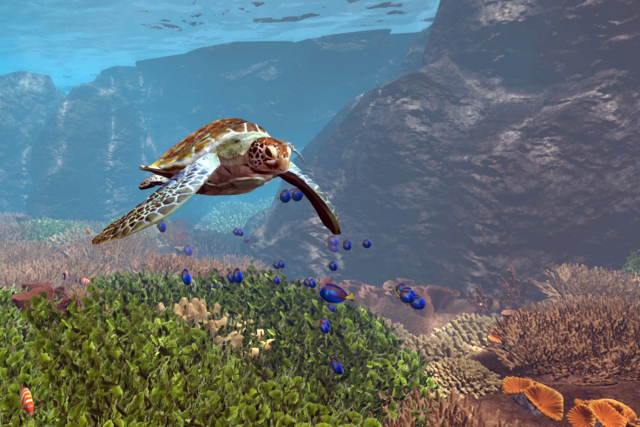
Graphic: Robin Hannah, ZMT
Interactive display of a virtual coral reef, which is available in a 3-D and a 2-D version on a PC with a monitor connected. Using a gamepad, visitors can move through the reef, marvel at a variety of corals, reef fish and invertebrates, as well as sea turtles and reef sharks, and access information about the animals and their threats. The gamepad can also be used to trigger actions in the reef, visualizing coral bleaching or dynamite fishing and their consequences.
In the 3-D version, you dive into the reef with the help of a virtual reality headset (Oculus) and move around in the very lifelike virtual reef world.
In the 2-D version, you navigate through the reef with the gamepad in front of a large screen; a VR headset is not required.
360° film "Coral Reefs - Life Under the Surface"
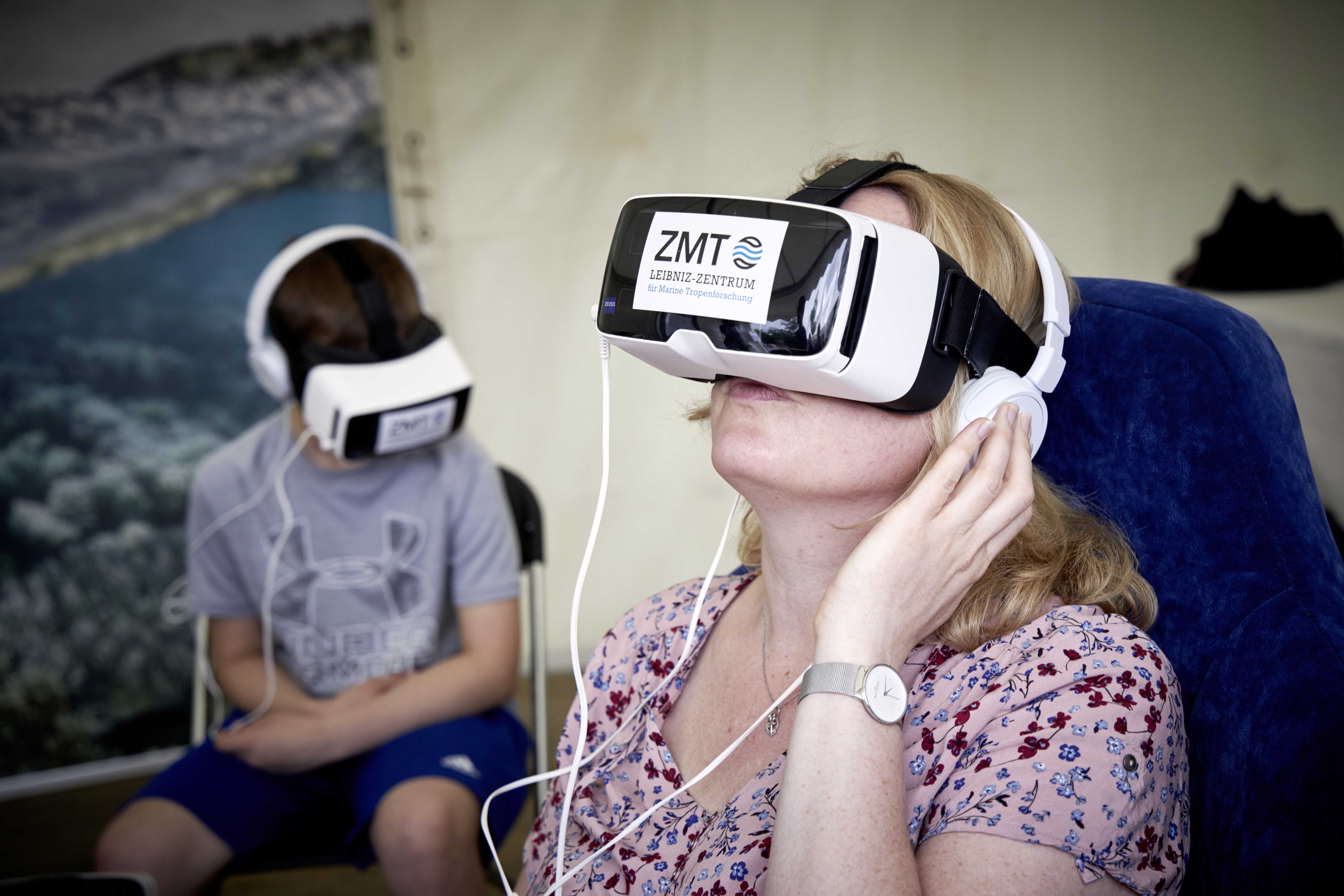
Photo: Martin Bockhacker, Uni Bremen
Shot with underwater cameras in 360° format, the film takes viewers on a journey through the Coral Triangle in Southeast Asia and its impressive reefs. The film is played on a cell phone with a VR app, and with an appropriate headset one can experience this fascinating underwater world in a 360° view, looking around like a diver while receiving information about reefs and their threats in the audio commentary. The virtual dive illustrates the beauty of this underwater landscape, but also shows what it could look like in the future if no investment is made in its protection.
Interactive showcase on Integrated Aquaculture (IMTA)
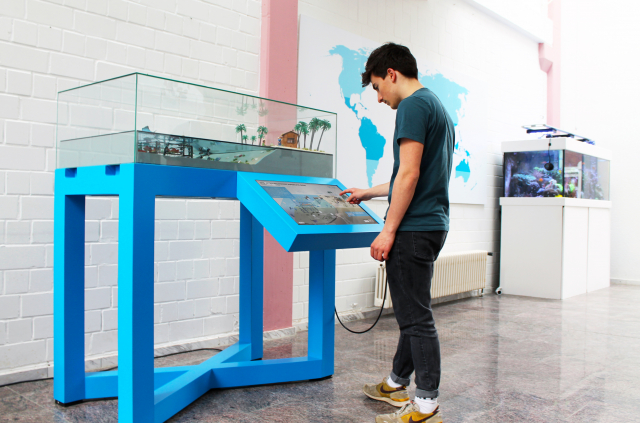
Photo: Scienceintermedia
Aquaculture management is considered an important food sector of the future. How can a sustainable circular economy succeed under water? A display case on the subject of integrated aquaculture measuring 64 x 124 cm shows a true-to-life tropical coastal scene in miniature: a boat glides across the water of a lagoon and heads for a netted enclosure with fish. Next to it, mussel and algae cultures hang from long lines into the seawater, sea cucumbers crawl across the seabed. On the beach, a woman lays out seaweed to dry. Fish are packed in boxes with ice, a transporter stands ready for action.
The showcase is equipped with a large touchpad on which visitors can call up further information on aquaculture with its many problems and opportunities, as well as videos and picture galleries.
Virtual learning game on coral reefs
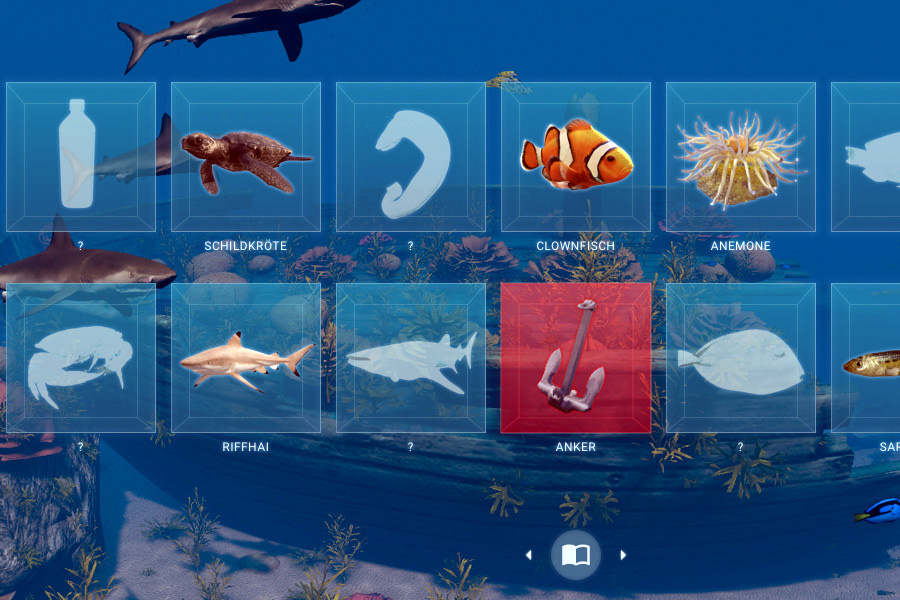
Together with scientists from the University of Bremen, the ZMT developed a virtual reality educational game. Equipped with a VR headset, players can encounter reef organisms in a dive through a virtual reef, retrieve information about them and solve tasks to protect the coral reef. A small clown fish accompanies the players and provides hints. The aim of the educational game is to improve the understanding of reef processes and the main factors that endanger the reefs.
Interactive stele on the topic of mangroves
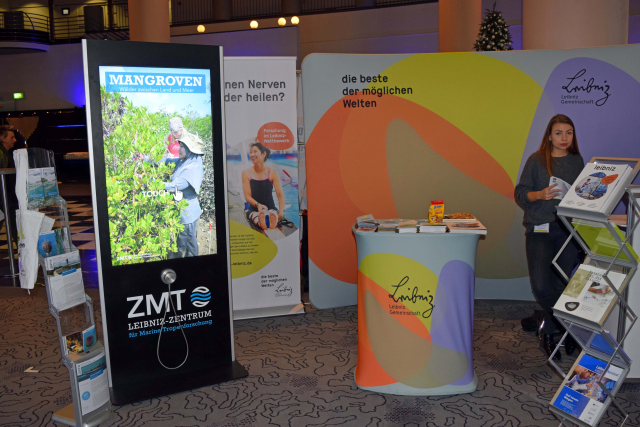
Photo: Susanne Eickhoff, ZMT
A 2 m high stele with monitor and touchpad function informs in a generally understandable way about mangrove ecosystems and the research projects of the ZMT on mangroves. A rotating globe on the monitor shows where these projects are located throughout the tropics and subtropics. The stele also shows an image gallery of mangroves from around the world, their fauna and flora, and their use by humans, as well as video interviews with ZMT scientists reporting on their research in a wide variety of mangrove regions.
Coral cores as climate archives
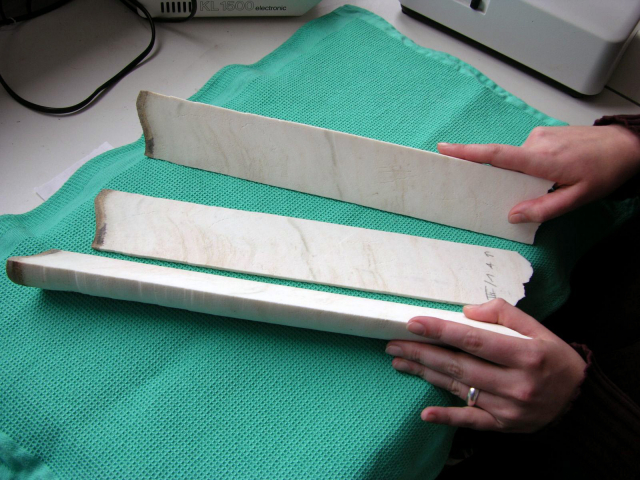
Photo: Carlos Jimenez, ZMT
Cores of stony corals show growth rings, as they are also known from trees. A black box with "peepholes" provides a view of the coral cores laid out in it, which are illuminated with UV light. This makes their annual rings more visible. The exhibit is related to ZMT research on environmental changes in Earth's history that manifest themselves in corals.
Photo exhibition: Coral Reef Organisms – Artworks of Nature
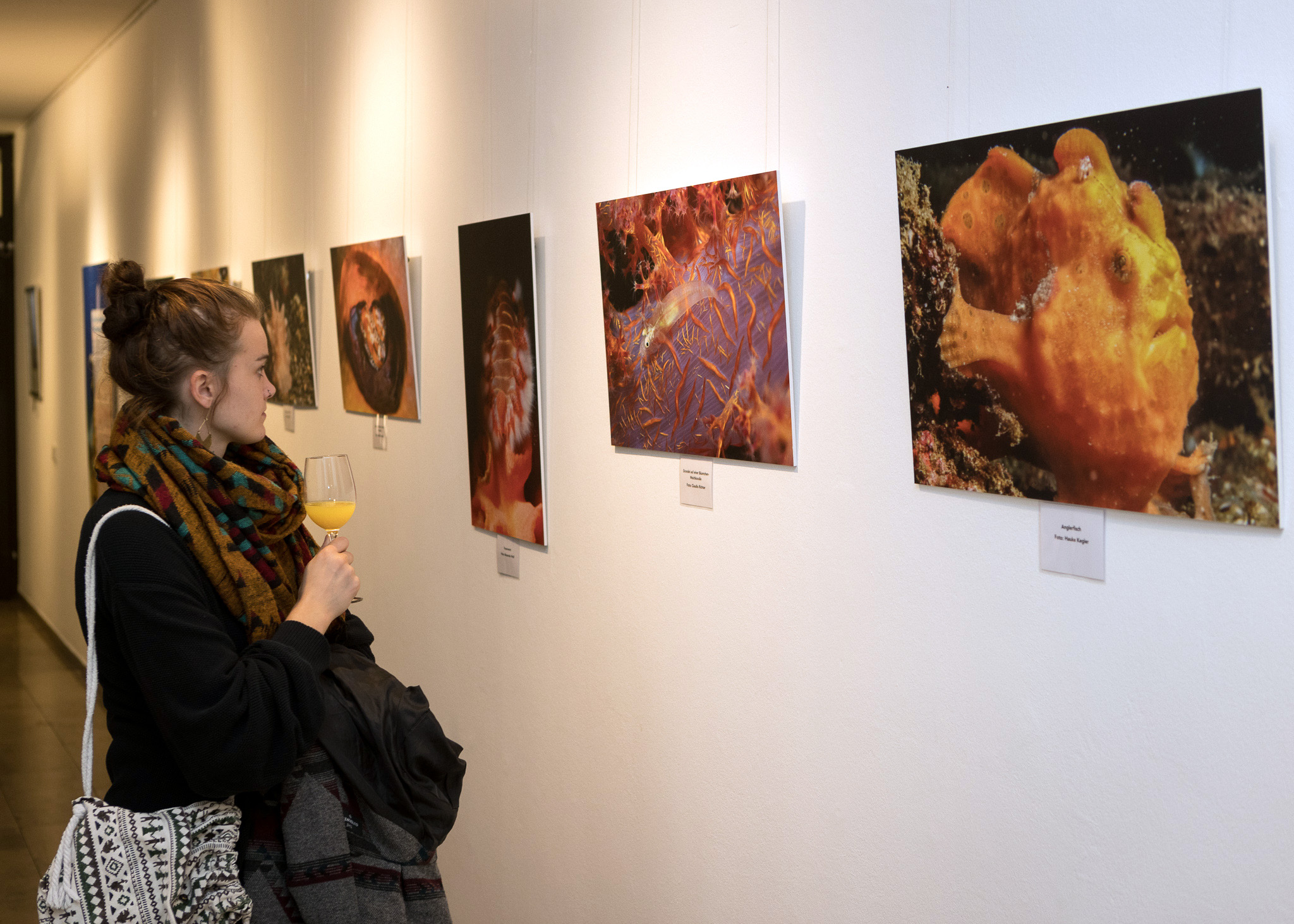
Photo: Jan Meier
Tropical coral reefs are among the most species-rich habitats on our planet. These "rainforests of the seas" are thought to be home to more than a million species of animals and plants. Some of the reef inhabitants enjoy particular popularity, such as clownfish, sea anemones or sea turtles. But who has heard of Christmas tree worms, orang-utan crabs or neon slugs?
The photo exhibition shows some of the most beautiful close-up images of coral reef creatures taken by ZMT research divers during their dives in tropical reefs. It consists of 20 pictures in 60 x 40 format and an information panel.
Coral calcareous skeletons
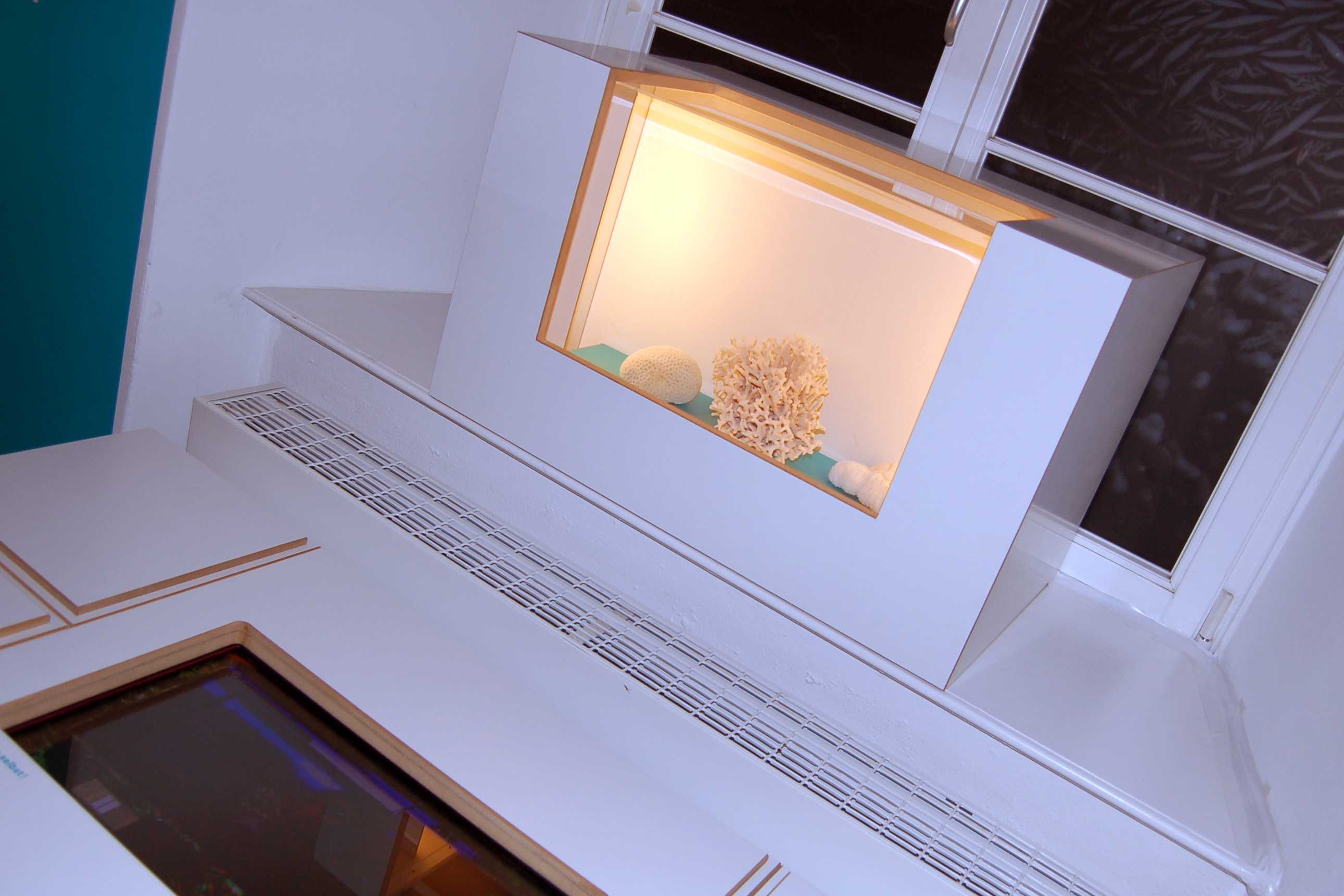
Photo: Susanne Eickhoff, ZMT
The ZMT has a collection of calcareous skeletons of various coral species, as well as jewellery and decorative items made of coral (on loan from customs), which it frequently exhibits.
Video and image material
Photo: Pia Kegler, ZMT
From their research trips to the tropics, ZMT scientists often bring back excellent photo material as well as video footage from the field, which are used for exhibits and displays, among other things.
Our Youtube presence (https://www.youtube.com/@LeibnizZMT/featured) features films on ZMT research, education, and other activities that give a sense of our work and the ecosystems in which we conduct research.
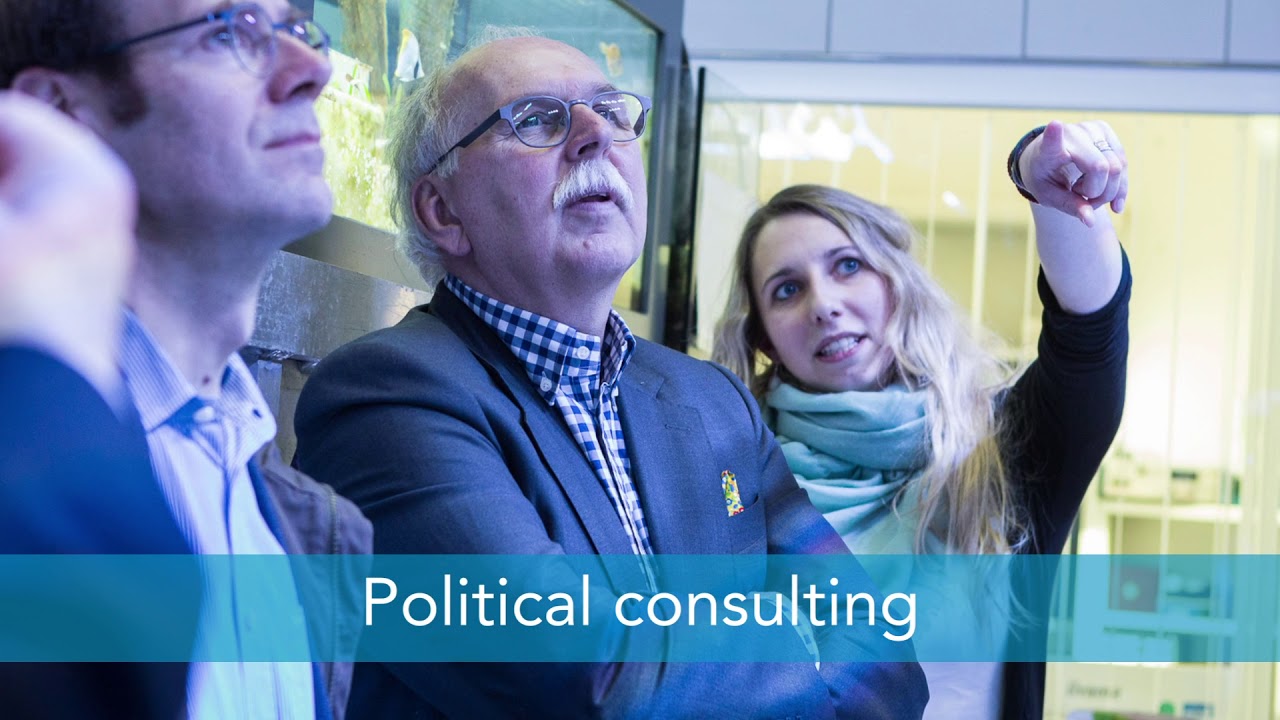 By clicking on this preview image, you consent to content being downloaded from YouTube or Google (USA). As a result, YouTube or Google (USA) receives the information that you have accessed our site and the data technically required in this context. We have no influence on further data processing by Google. Further information can be found in our privacy policy.Watch on YouTube
By clicking on this preview image, you consent to content being downloaded from YouTube or Google (USA). As a result, YouTube or Google (USA) receives the information that you have accessed our site and the data technically required in this context. We have no influence on further data processing by Google. Further information can be found in our privacy policy.Watch on YouTube





